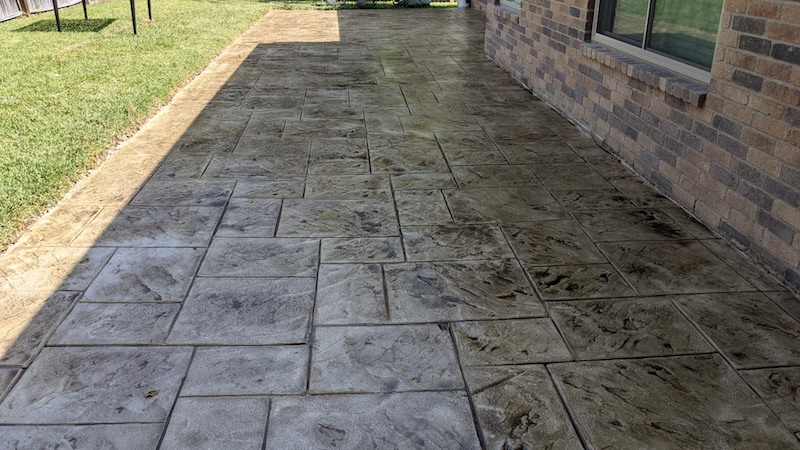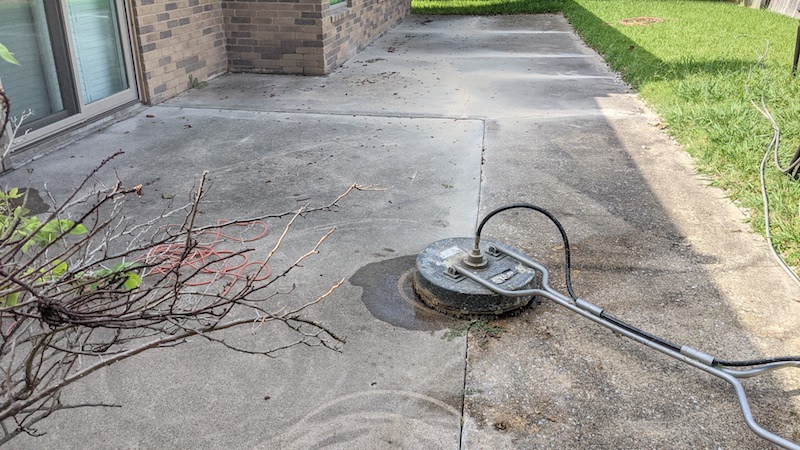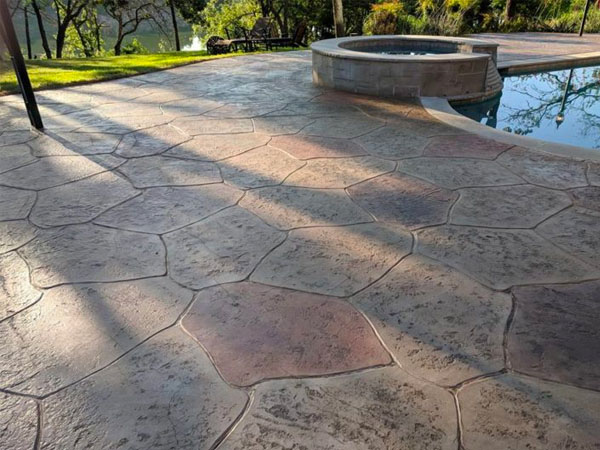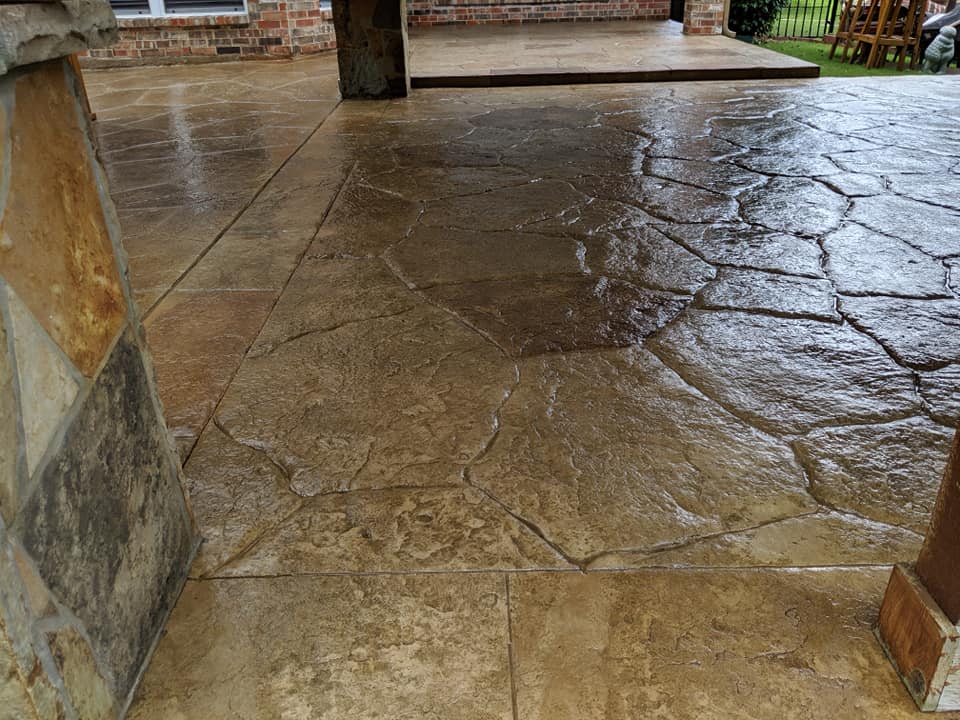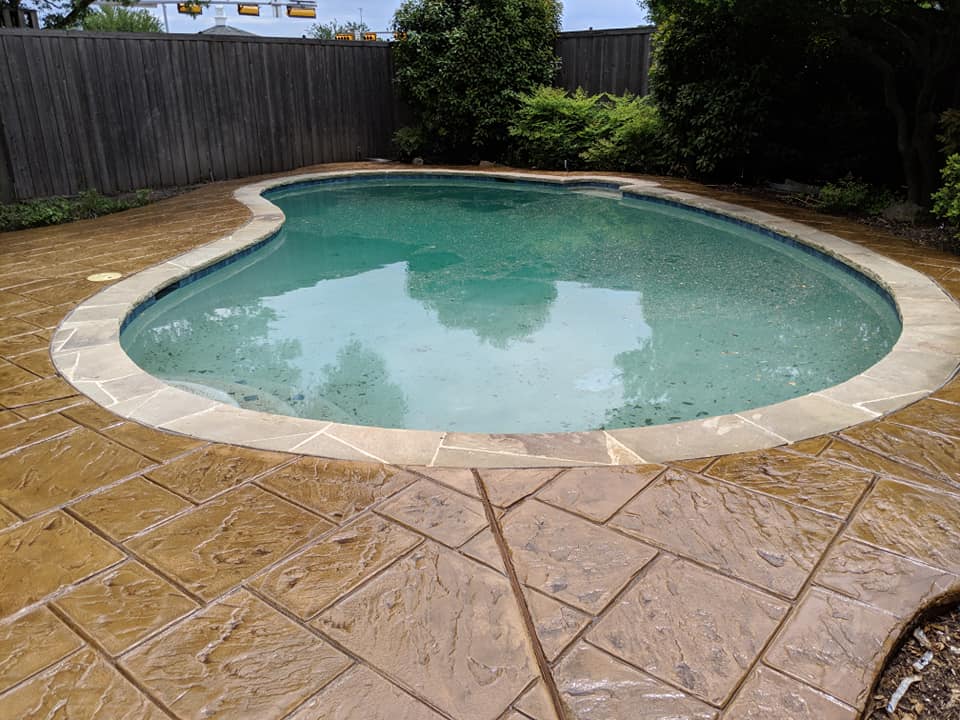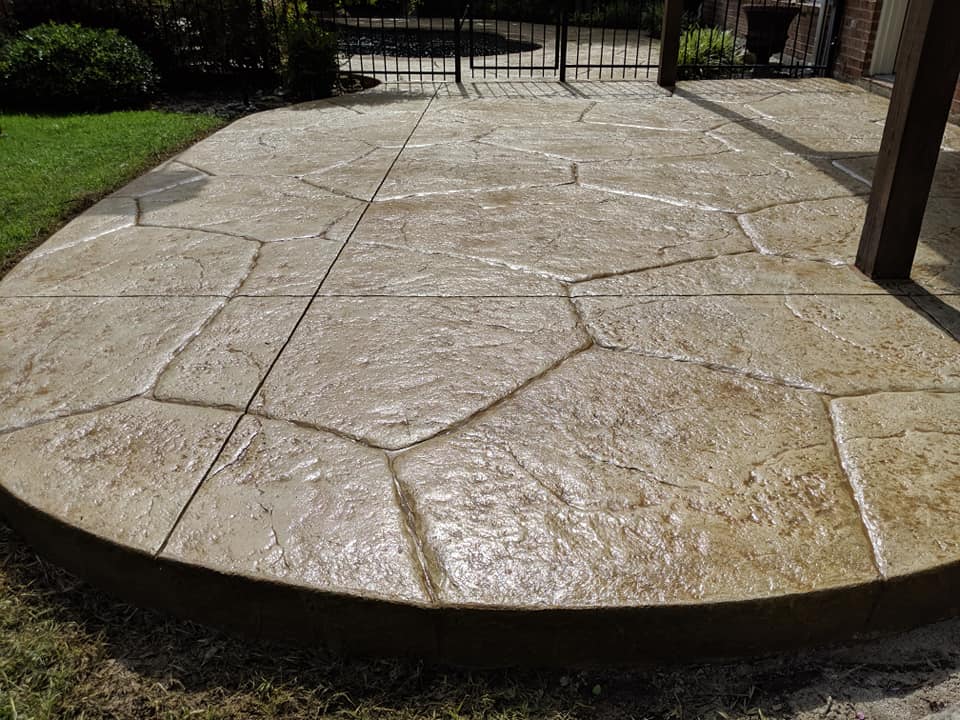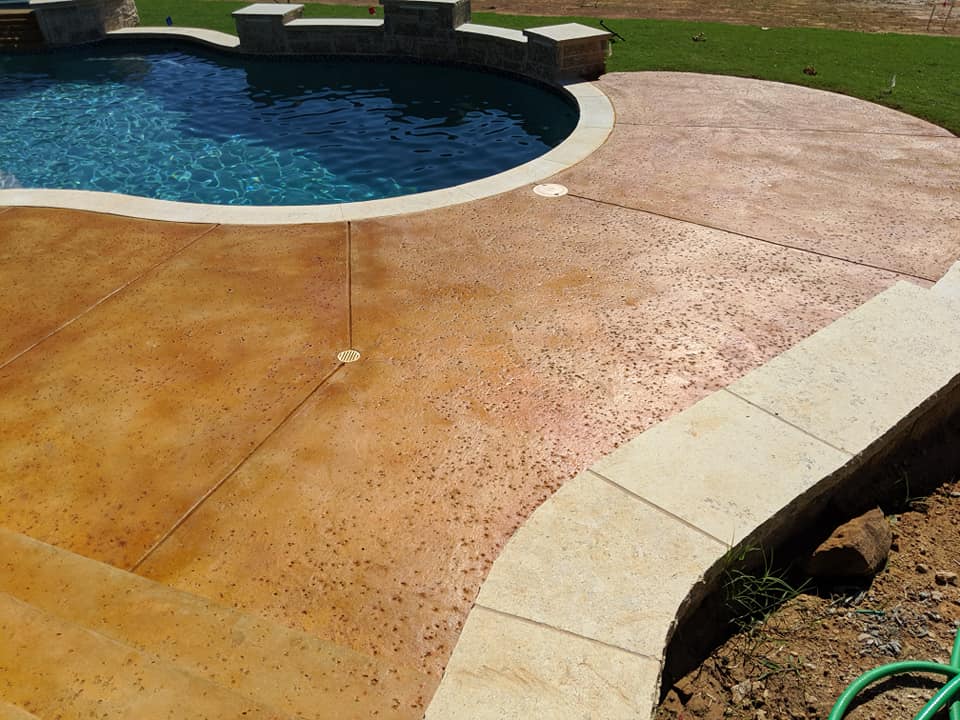Revitalize Your Old Concrete With Resurfacing and Sealing
Concrete is one of the most durable flooring solutions available today. Though very low maintenance, your concrete floor does require some care. The type and frequency of care is largely dependent upon the specific concrete application, the level of traffic and whether your flooring is indoors or out.
When your concrete surfaces need a refresh, trust Flores Decorative Concrete for concrete cleaning and re-sealing.
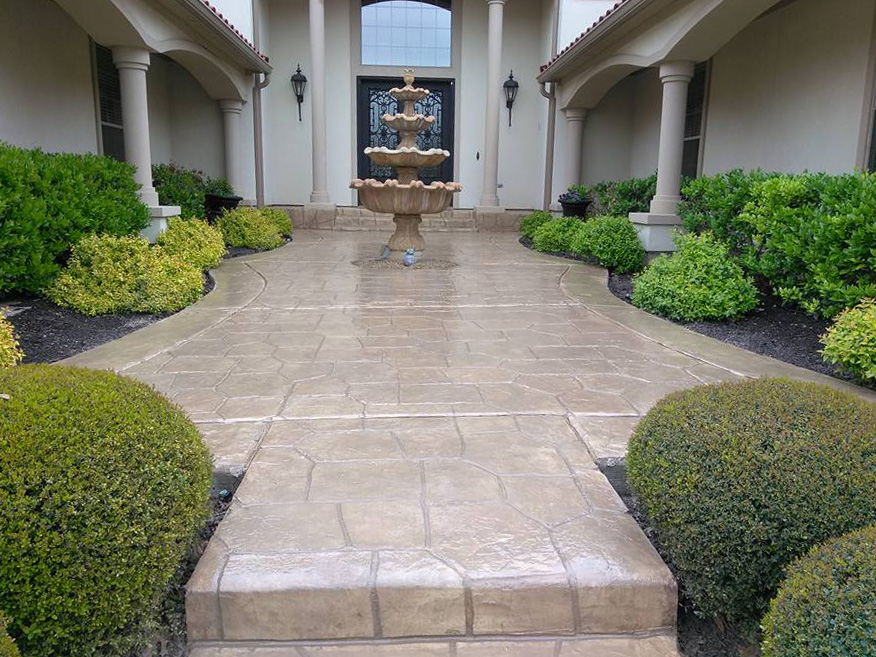
Concrete Cleaning and Re-Sealing
Beyond regular cleaning, concrete floors are very easy to maintain. If the shine begins to dull, which may take quite a while if traffic is light, a simple buff should bring it back to life. Generally speaking, polished concrete floors should not need additional polishing for at least 2 to 3 years. When it is time to refresh your floors, you can trust the experts at Flores Decorative Concrete to assess your concrete surface’s specific needs and bring them back to life.
Depending on the amount of traffic and the type of sealer used, most indoor concrete flooring can go up to 5 years before re-sealing. Outdoor flooring that sees significant exposure to the elements, like an uncovered patio or walkway, may need a re-seal every couple of years. Our epoxy and urethane sealers can last 5 to 10 years, again depending on the level of traffic and exposure to elements. When resealing is needed, a light sanding and reapplication is typically all that is required to restore your floors.
Why We Recommend Concrete Sealing (and Re-Sealing)
Research from the American Concrete Institute finds that most concrete damage is due to surface moisture intrusion. Sealing blocks the natural pores found in concrete and creates an impermeable barrier, protecting the area from water. Sealing also reduces surface damage, prohibits deep staining and protects against corrosion. The cost of sealing is minimal compared to the cost of replacing damaged or discolored concrete.
There are many types of sealers available today. Our professionals are trained to evaluate each situation, consider your desired look and current surface seal, and determine the best solution for the space.
We Meet You Where You Are
Some of our clients are building from the ground up with fresh concrete, but most of our clients are looking to enhance or simply fix older concrete: plain or stained or scored; dulled polish or worn wax; faded color; excessive layers of sealer or inappropriate sealer for the job; or a generally unattractive appearance. We’ve seen it all. A reapplication of an existing seal or finish may not be the best solution for your particular situation. We take the time to listen to your concerns, study your situation, consider your budget and goals, and devise a plan that makes sense for you. Contact us today to learn more!


